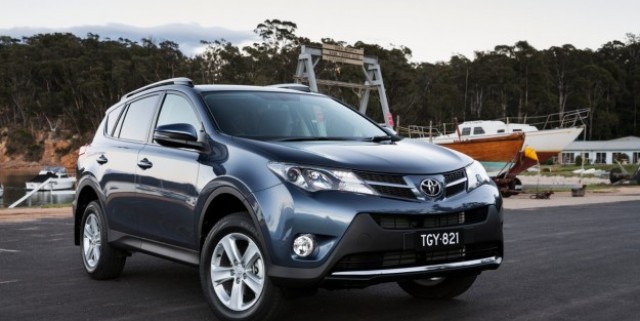
The fourth-generation Toyota RAV4 has launched in Australia with a starting price of $28,490, a $500 reduction over the outgoing model.
The all-new Toyota RAV4 sports a far more modern look than its predecessor and is recognisable as part of the new Toyota family of cars, sharing a close resemblance with the recently launched Corolla.
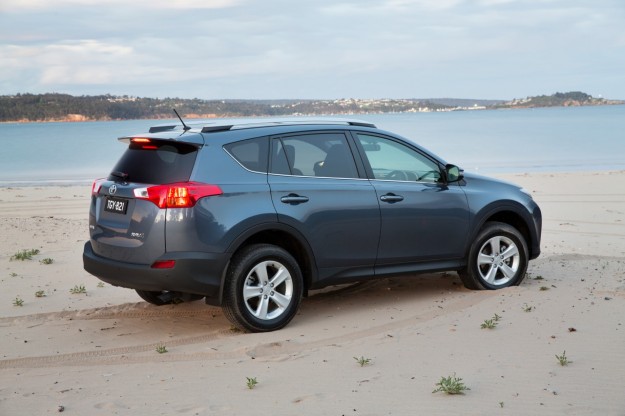
The most noticeable difference is the location of the spare wheel, which has been moved from the back door to under the cargo floor.
There are 16 variants in the 2013 Toyota RAV4 line-up, three more than before, thanks largely to the inclusion – for the first time ever – of a turbo-diesel engine, which will undoubtedly help Toyota’s second best-selling SUV counter strong opposition.
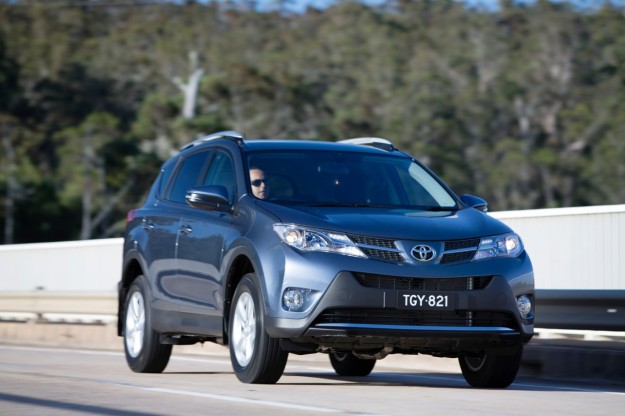
The front-wheel-drive models are powered by a 2.0-litre four-cylinder engine that produces 107kW of power and 187Nm of torque, while sipping 7.7 litres of standard unleaded per 100km when coupled to a six-speed manual. No other engine is offered in the front-wheel-drive configuration. Stepping up to a continuously variable transmission (CVT automatic) adds $2500, which uses an extra 0.2L/100km.
Moving up to the AWD RAV4 range, the Toyota SUV is offered with either a 2.5-litre four-cylinder petrol engine or a 2.2-litre four-cylinder turbo-diesel. The bigger petrol offers 132kW of power and 233Nm of torque while the diesel offers 110kW of power and 340Nm of torque. The V6 model has been dropped and no hybrids are available.
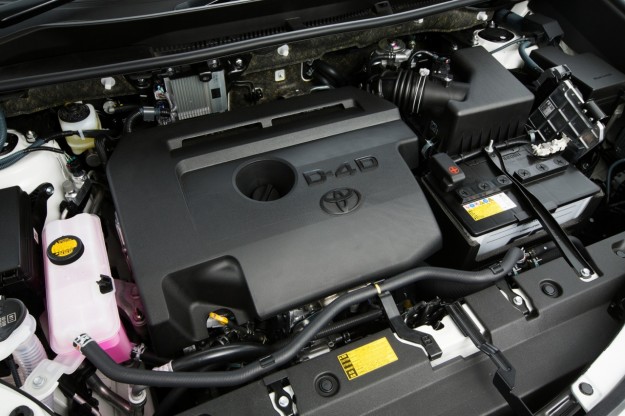
Both are available with either a six-speed manual or a traditional six-speed automatic (not CVT). Despite being AWD and the heaviest of the lot – the diesel variants – are the most fuel efficient, with manual models using just 5.6L/100km and the automatic not too far behind at 6.5L/100km. The AWD petrol is the least efficient in the range, burning 8.6L/100km for the manual and 0.1L/100km more for the auto.
Toyota has included a Sport mode (on all models except the manual 2WD variants) which the company claims helps improve handling and provde a more engaging drive. When in Sport mode the RAV4’s steering system decreases power-steering assistance to give more steering feel, while also sharpening throttle response, and adapts the control logic for the automatic and CVT gearboxes to allow for more responsive gearshifts.
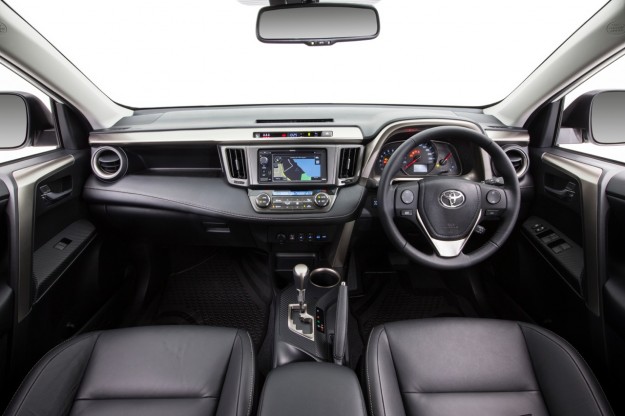
The AWD system has also been upgraded, now making use of a Dynamic Torque Control system that alters torque distribution between the front and rear wheels, using an electromagnetic coupling in the rear differential housing.
Although no safety results have been released yet, it’s almost guaranteed the Toyota RAV4 will achieve the maximum five-star safety rating, thanks to its high-quality construction as well as seven airbags, stability and traction control and anti-skid braking systems.
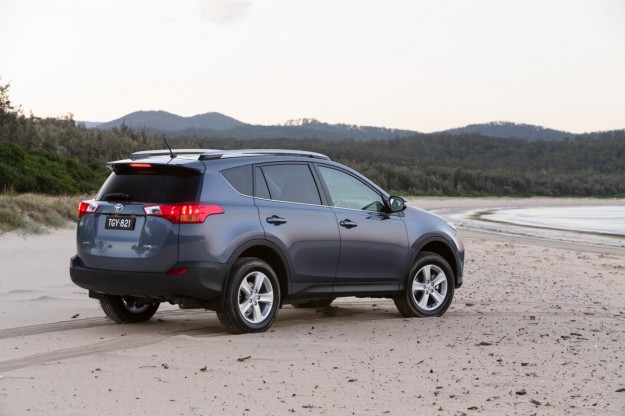
Standard features across the range include a tilt- and telescopic-adjustable steering column, cruise control, projector-style headlamps, Bluetooth-enabled CD player, six speakers, 60:40 split-fold rear seats, rear spoiler and roof rails. Despite the safety benefits, the base model GX variants miss out on a reversing camera as standard equipment.
The mid-spec Toyota RAV4 GXL gains over the GX 17-inch alloy wheels, reversing camera, upgraded audio system and seats, dual-zone climate control, rain-sensing wipers, power-retractable exterior mirrors, keyless smart entry and push-button ignition.
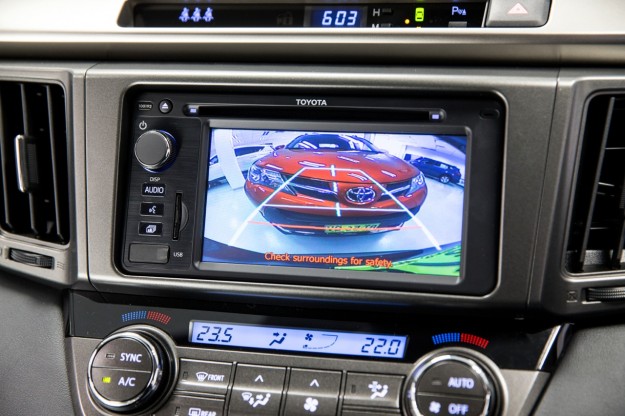
The top-of-the-range Cruiser variants add satellite navigation, blind-spot monitor (detects vehicles in the driver’s blind spot and shows a warning on the side mirror), power-operated luggage door, HID headlamps, powered driver’s seat and a sunroof.
Luggage space measures 577 litres with a temporary spare wheel on board or 506 litres with an optional full-size spare ($300). All models are covered by Toyota’s capped-price servicing program, which means you’ll pay no more than $170 per service for the first six services (10,000km or six-month intervals).






